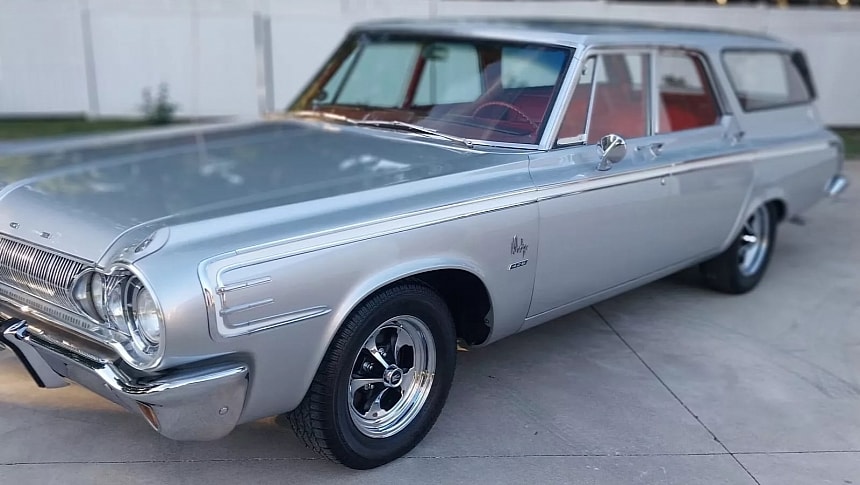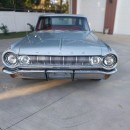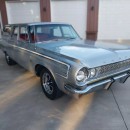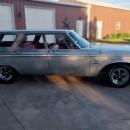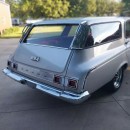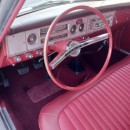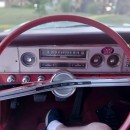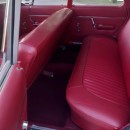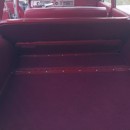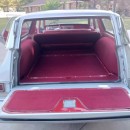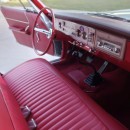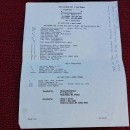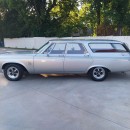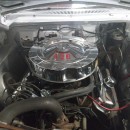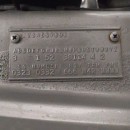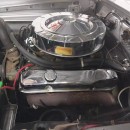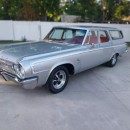Only produced for a couple of years, the Dodge 440 is one of the company's lesser-known nameplates. And while it may not be the first vehicle we think of when talking about golden-era muscle cars, the 440 played a key role in this segment.
The "440" badge first appeared in 1962 on the Dodge Dart, which had been on the market for three years. Launched as a full-size car in 1960, it was re-assigned to midsize duty in 1962. The 440 was the upmarket trim of the nameplate, sitting above the standard Dart and the mid-range Dat 330.
In 1963, Dodge decided to shrink the Dart for the second time as a replacement for the Lancer. The Dart became the compact car we all know. But the 440 did not disappear. Dodge used the badge on its then-new midsize car lineup, which included the Polara as a range-topper. The 440 bridged the gap between the latter and the entry-level 330.
When Dodge introduced the Coronet for the 1965 model year, the 440 was returned to trim level status, shortening its career as a stand-alone nameplate to only two years. Due to its polarizing design, the 1963-1964 Dodge 440 isn't exactly desirable nowadays, but the car played a key role in the muscle car wars of the 1960s. Primarily because it was among the recipients of the Max Wedge engine, the predecessor of the more iconic 426-cubic-inch (7.0-liter) HEMI.
Developed for drag racing, the Max Wedge was available in 413 and 426-cubic-inch displacements and generated 415 to 425 horsepower. From 1962 to 1964, the mill found its way into various midsize Mopars. These factory-built, lightweight dragsters are very rare and desirable today.
This 1964 440 station wagon isn't one of those rigs (Chrysler did not build Max Wedge grocery-getters), but it hides the next best thing under the hood. I'm talking about the 426 Street Wedge, which, as you may have already guessed, was designed primarily for street use.
Dodge's range-topping mill at the time, the Street Wedge sat atop the 383-cubic-inch (6.3-liter) big block, providing an additional 35 horsepower and 40 pound-feet (54 Nm) of torque. Specifically, the Street Wedge V8 sent a solid 365 horsepower and 465 pound-feet (631 Nm) of twist to the rear wheels through either a four-speed manual or a TorqueFlite automatic. With this mill, the 1964 Dodge 440 coupe needed less than 15 seconds to cover the quarter-mile.
Unlike the hardtop version, the station wagon is an unlikely recipient of the 426 Street Wedge. There's no specific info on how many grocery-getters got the high-performance mill, but their number must be in the hundreds (Dodge sold 30,300 midsize wagons in 1964). But we do know for a fact that this wagon is an authentic Street Wedge car, thanks to a report by Mopar expert Galen V. Govier. Unfortunately, he doesn't provide insight as to how rare it may be.
Scarcity aside, this Mopar appears to be in pristine condition, which is most likely the result of a restoration. Some engine components show weathering, indicating that the 426 Street Wedge V8 is numbers-matching.
One of the coolest sleepers of the era, this station wagon is currently under the hammer from Neosho, Missouri. With two more days to go, more than 30 bids have pushed the price to $32,800. The reserve is still in place, however, and I'm not expecting it to drop before the $50,000 mark.
In 1963, Dodge decided to shrink the Dart for the second time as a replacement for the Lancer. The Dart became the compact car we all know. But the 440 did not disappear. Dodge used the badge on its then-new midsize car lineup, which included the Polara as a range-topper. The 440 bridged the gap between the latter and the entry-level 330.
When Dodge introduced the Coronet for the 1965 model year, the 440 was returned to trim level status, shortening its career as a stand-alone nameplate to only two years. Due to its polarizing design, the 1963-1964 Dodge 440 isn't exactly desirable nowadays, but the car played a key role in the muscle car wars of the 1960s. Primarily because it was among the recipients of the Max Wedge engine, the predecessor of the more iconic 426-cubic-inch (7.0-liter) HEMI.
Developed for drag racing, the Max Wedge was available in 413 and 426-cubic-inch displacements and generated 415 to 425 horsepower. From 1962 to 1964, the mill found its way into various midsize Mopars. These factory-built, lightweight dragsters are very rare and desirable today.
This 1964 440 station wagon isn't one of those rigs (Chrysler did not build Max Wedge grocery-getters), but it hides the next best thing under the hood. I'm talking about the 426 Street Wedge, which, as you may have already guessed, was designed primarily for street use.
Dodge's range-topping mill at the time, the Street Wedge sat atop the 383-cubic-inch (6.3-liter) big block, providing an additional 35 horsepower and 40 pound-feet (54 Nm) of torque. Specifically, the Street Wedge V8 sent a solid 365 horsepower and 465 pound-feet (631 Nm) of twist to the rear wheels through either a four-speed manual or a TorqueFlite automatic. With this mill, the 1964 Dodge 440 coupe needed less than 15 seconds to cover the quarter-mile.
Unlike the hardtop version, the station wagon is an unlikely recipient of the 426 Street Wedge. There's no specific info on how many grocery-getters got the high-performance mill, but their number must be in the hundreds (Dodge sold 30,300 midsize wagons in 1964). But we do know for a fact that this wagon is an authentic Street Wedge car, thanks to a report by Mopar expert Galen V. Govier. Unfortunately, he doesn't provide insight as to how rare it may be.
Scarcity aside, this Mopar appears to be in pristine condition, which is most likely the result of a restoration. Some engine components show weathering, indicating that the 426 Street Wedge V8 is numbers-matching.
One of the coolest sleepers of the era, this station wagon is currently under the hammer from Neosho, Missouri. With two more days to go, more than 30 bids have pushed the price to $32,800. The reserve is still in place, however, and I'm not expecting it to drop before the $50,000 mark.
